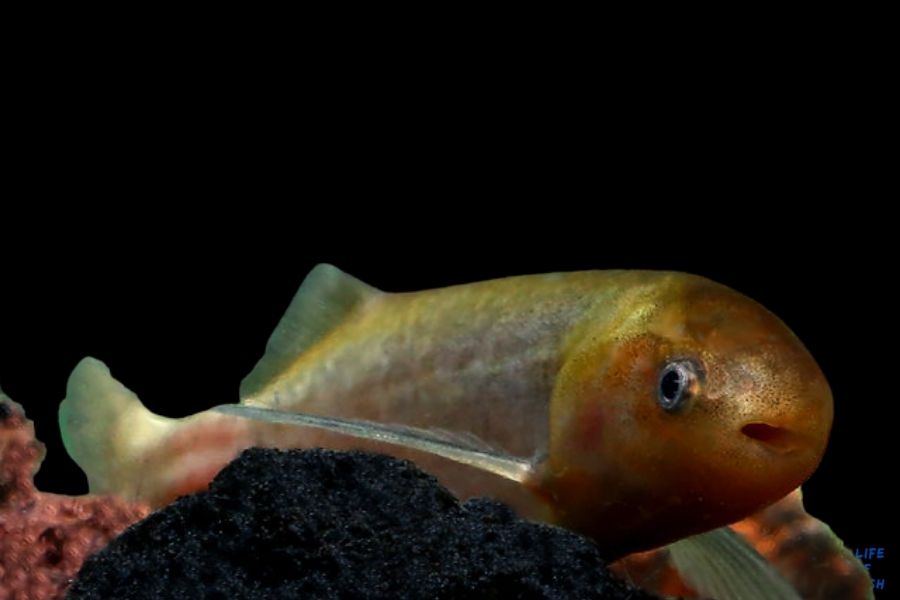The baby whale fish electric organs are composed of small cells named electrocytes. These electrocytes produce pulses that are very much the same as the action potentials in nerves and muscles in the human body in terms of speed and voltage.

Details on baby whale fish electric organs
Jump To
Baby whale fish belong to the family of Mormyridae. They are famous as freshwater elephant fish in common. All the family members possess electric organs and thus are notable for their ability to generate weak electric fields. The baby whale fish electric fields can be classified into two groups. They are pulse fish and wave fish. Pulse-type fish discharges are characterized by long intervals between electric discharges.
The electric discharges of wave-type fish are a bit different from the pulse-type fish as their discharges occur when the interval between consecutive pulses is so brief that the discharges fuse together to form a wave. The Baby whale fish belong to the group pulse-type electric fish. They produce weak electric discharges for communication and navigation in their environments with a specialized organ called an electric organ.
Where are those Electric organs?
The electric organ of the Baby whale is at the tail of its body. The electric organ of these fish is special as it has incredible precision and synchronization. All the cells of their electric organ emit electric pulses simultaneously when the fish’s nervous system instructs them to do so. The combined voltage of all these cells forms a weak electric field. They can release electric pulse that ranges from 100 Hz-150 Hz. We can use specific instruments to identify these weak electric fields.
The system works somewhat like sonar. However, the speed of the pulses is at the speed of light instead of sound. The pulses are not reflected or refracted and they are resisted or conducted through objects. The fish has a second array of electroreceptor cells, called mormyromasts, that detect distortions of the electric field.
How the electric organs work
It can identify the objects by the array of electric signals and can discriminate tiny differences in objects with this sense. However, the use of electricity in this way has two potential downsides. Firstly, predators that can sense electric pulses can identify these signals and can prey on them. Secondly, if many fish use these signals at the same time, the messages could interfere with each other.
The Baby whale has a special adaptation to overcome these difficulties. They create weak, extremely rapid electrical pulses that last just a few thousandths of a second. Because of these short pulses, the predators cannot sense them. Also, it will reduce the probability of jamming the messages of individuals of the same species. These quick blips are created by tiny tunnels called potassium channels that are found in nerve cells throughout the animal world.
The Baby whale fish creates its super-speed electrical blips by opening and closing the potassium channels in the small,plate-like cells that make up its electric organ, A protein, KCNA7, plays the gatekeeper for such cells. It can increase the speed of the opening and closing of potassium channels and hence they can send quick pulses that differ from other species. The larvae stage of baby whales also can produce an electric pulse. They use it to find prey, navigation, and protection from predators.
What do they use for those organs?
The primary use of the electric organ is for navigation and communication. The pulses emitted from the electric organ located in its tail allow it to communicate information about its species, sex, and intentions with other members of its species. They have a brilliant communication system based on electric pulses. The properties of electric pulses make a code similar to a “Morse code”. For example, the shape and the timing of the waveform convey information about the species and sex of the individual.
The sequence of the pulses conveys information about social contexts such as aggression and trying to court a mate. The Baby whale lives in the murky waters of Africa and it is not easy to see through the murky water. The electric organ of the Baby whale eases this difficulty in a clever manner. They use the pulses to protect from predators too.
The electric organ of Baby whale fish does a big deal during their breeding season. They can distinguish the gender of the Baby whale by analyzing their electric signals. The males of this species release pulses with high frequency during their spawning period. Therefore, the females can identify them easily and find a suitable male for a mate.
Read Next : Baby Whale Fish Size | Every Size Related Facts | 6 Baby Whale Fish Tank Mates For Your Baby Whale Tank
